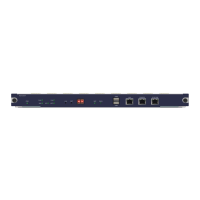Confidential and Proprietary Information of ZTE CORPORATION 161
Chapter 12
Static Route Configuration
Overview
The chapter covers static route and its configuration, covering
special summary static route and default route.
This chapter covers following topics.
TABLE 201 TOPICS IN CHAPTER 12
Topic Page No
Background 161
Static Route Summary 164
Default Route 165
Background
Static routes are user-defined routes that cause packets moving
between a source and a destination to take a specified path.
They are useful for specifying a gateway of last resort to which
all unroutable packets will be sent. Static route, unlike a
dynamic route, does not set up the routing table based on
routing algorithm.
When configuring a dynamic route, routing information of entire
Internet must be sent to a router, such that the router is hard to
hold the load. In this case, static routes can be used to solve the
problem. However, in a routing environment where there are
multiple routers and multiple paths, this is very complicated to
configure static routes.
Router operating system (ROS) remembers static routes until to
remove them explicitly. However, this can override static routes
with dynamic routing information through prudent assignment of
administrative distance values.
Introduction
Contents
User Defined
Routes
Implementation

